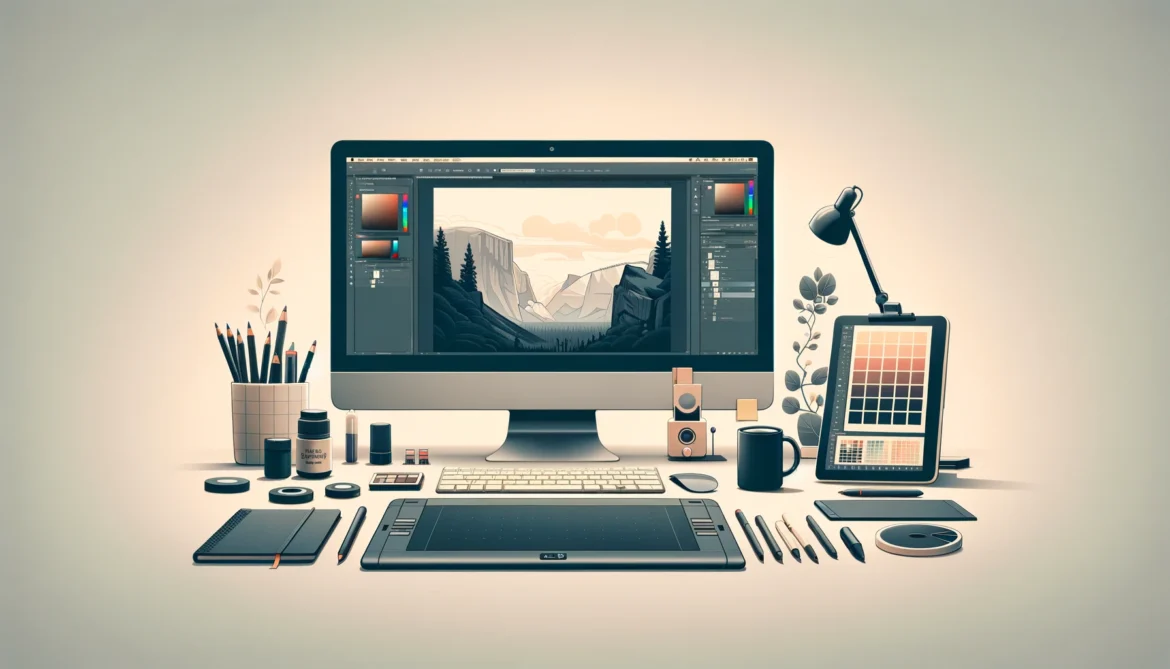Table of Contents
Being a true professional in your craft requires grit, perseverance, and a continuous commitment to learning and improvement. Let’s say you have all that, and you now find yourself working in your dream profession: graphic design.
While the traits mentioned above will get you through the door, to truly thrive as a graphic designer, you will need to master a few more skills and behaviors. This article will provide you with seven must-dos for excelling in the field of graphic design.
Clear communication with clients
Whether you work freelance or full-time for a company, communication will always be a big part of your work as a graphic designer. Be clear and professional in your communications, and always make yourself available.
While many clients will give you complete freedom to take the design in the direction you want, some won’t, and even those that do will have general requirements you must follow. During the planning stage, make sure you communicate effectively, grabbing as many details as possible to avoid making multiple revisions.
Sometimes, clients underestimate the time and workload required to complete a task. Be clear and firm in these situations, and give realistic timelines to avoid confusion. It also doesn’t hurt to request a quick meeting or send a chat to clarify any ambiguities. Remember, communication goes a long way. 9/10 clients would prefer an extra meeting than to go through several revisions before getting the desired result.
Stay on top of the latest design trends
As with anything in technology, graphic design trends are constantly changing. What looked cool a few years ago may appear ancient to a modern audience. So, avoid getting stuck in your ways by using old templates or not utilizing the latest and greatest technologies available.
A relevant example is the use of AI. Understandably, many graphic designers aren’t too keen on embracing AI tools. However, integrating AI into your workflow can significantly enhance efficiency, creativity, and the ability to generate innovative solutions. Don’t look past technologies like these because if everyone else is using them, you may fall behind.
Have an impressive portfolio site
While there are jobs out there that only require a CV or cover letter, graphic design is certainly not one of them. After all, it’s a visual profession, and people would rather see real examples of your work than read how many years of experience you have.
Setting up a simple portfolio website is a quick and easy way to showcase your work with little to no investment. Instead of constantly looking for and sending past projects to each client, you can point them to a single website where they can find out more about you and your work.
Your website is a representation of you, so tailor it to your specific target audience. Include some of your best work that showcases your skills, creativity, and versatility. You could also include a few client testimonials to build even more rapport.
Use a password manager for your accounts
Being efficient and organized is a hallmark of a true professional. As a graphic designer, you likely have several critical accounts you use daily. These include your graphic design tools, communication services, invoice management software, and others.
A password manager is a tool you can use to efficiently manage your accounts. All of this tool’s types – personal, enterprise, or team password managers – are a good choice when handling sensitive data. They generate strong passwords that will protect the sensitive data and client information in your accounts and store the passwords securely where only you can access them. This way, you kill two birds with one stone, improving security and efficiency.
Organize and prioritize tasks
Full-time graphic designers rarely have a single project they’re working on on any given day. So, learning how to navigate through the different projects and tasks you must complete is a skill you should master early in your career.
One way to make your life easier is by using project management tools. These tools will help you keep track of deadlines, client feedback or notes, and other critical aspects of each project. Having all of this information in a single platform, rather than scattered in your email, will save you a ton of time and stress.
Specialize your work
When starting out, it’s good to cast a large net and land as many clients as possible. However, as you grow and get more experience, it may be wise to specialize in a certain industry or type of graphic design. This will help you stand out as a true subject matter expert and make it easier to advertise yourself for clients in a particular niche.
The niche you select could be based on your skills, market circumstances, or solely on your interests and goals. If you’re strictly after the money, conduct market research to identify niches with high demand and low competition. Graphic design is a relatively saturated market, but you would be surprised how many unrepresented smaller niches there are that you can profit from.
Seek feedback and network with other designers
Most successful people in any sphere will tell you that networking and making connections are their most valuable skills. As a graphic designer, especially if you’re a freelancer, you might think it’s just you and the rest of the world. However, there are countless opportunities to connect with other designers, learn from their experiences, and share your own insights.
Joining online communities, attending design conferences, participating in workshops, and engaging in social media groups dedicated to graphic design can open doors to collaborations, feedback on your work, and new client referrals. For many graphic designers, their most profitable clients have come from word-of-mouth recommendations within these communities.
Final thoughts
Being a graphic designer is no easy feat. You need technical skills that require significant practice and dedication. You also need excellent communication and time management skills to stay on track with projects and meet client demands. But the rewards of being in a field you love that allows you to be creative and collaborate with like-minded people are worth it.









